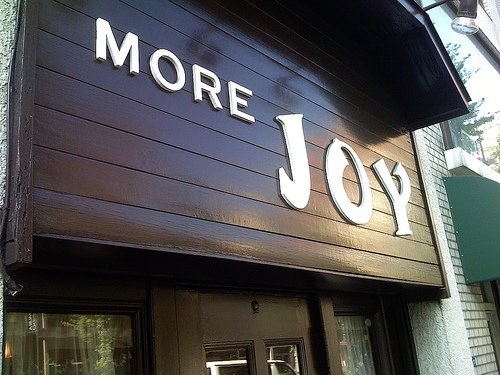Perceptions are funny things, and it’s surprising how easily they can be wrong. One day a student of mine asked me with a straight face, “Do they have McDonald’s in America?” Like most Japanese, the student had grown up with “Makudonarudo” around her all her life and had naturally assumed it was a Japanese chain. Another student of mine was sure that Sony was an American company, since it wrote its name in katakana, and was quite surprised when he learned the truth. In Japanese, the word for detective is keiji (刑事), which has the same pronunciation of Nicholas Cage’s last name, prompting my son to become confused about why the actor only made police drama stories (he thought each movie was part of a series called the Detective Nicholas series). Compared to Japan with its strict social rules, America can seem like a very “free” place, and a lot of times Japanese who study English get carried away with this, saying whatever comes to mind because they’re sure that’s what Americans are doing all the time…
Before I came to live in Japan, I didn’t expect to find much in the way of steak, since (I was sure) beef would be so expensive that a person would have to sell one of their kidneys in order to afford it. In reality, the Japanese eat quite a lot of beef in many forms, from gyudon (beef bowl) to yakiniku (Korean BBQ) to sukiyaki to high-end Kobe Beef that costs $50 per plate. While the most common form of beef consumption in the U.S. is probably the All-American hamburger, in Japan it would most likely be the “hamburg steak,” a steak made from ground beef, which costs around $6-10 for a complete meal. (Quick quiz: a hamburger is to a frankfurter as a hamburg is to a ____________?) Our our favorite chain of steak restaurants offers many varieties of hamburg steak, with the most popular variety being a steak served on a sizzling plate with sauce made from grated daikon radish poured over the top. Steak is always served with a side of steaming white rice, and because meat is considered “Western” food you always call the rice by its English name (raisu) rather than Japanese (gohan) for some odd reason. To the Japanese, a really good steak means fattier fare, and the best meat is ripped throughout with fat to make it succulent — although it can be a bit too rich for my palette. When our family makes our weekend trips to the mountains, we often eat Korean BBQ, which is essentially pieces of marinated beef cooked over a fire and eaten on rice, and we’ve learned that the cheapest type of meat suits us the best since it’s the leanest.
Over the weekend I took my kids to Caribbean Beach, a wave pool that lets us experience a visit to the beach in the middle of landlocked Gunma Prefecture. It’s quite an ingenious system, with all energy for the pool being provided by a massive 10-story trash incinerator next door, which converts everyone’s “burnable trash” into heat and captures nearly all the smoke. Like many aspects of modern Japanese life, it was built by our local city with tax dollars rather than as a private enterprise, and the cost of going to the pool is partially subsidized by the fact that we’ve already paid taxes. While the pool is a an example of a well-conceived service, there are plenty of instances where the Japanese government has thrown money away on facilities no one has asked for and few will use. The biggest bank in the world isn’t Citibank, or Chase Manhattan or Bank of America: as determined by deposits, it’s the Japanese Postal Savings Accounts, which hold a staggering $2 trillion in cash. Unable to resist this low-hanging fruit, Japanese politicians have allowed some of it to be used for construction of a chain of large resort hotels throughout the country, which never seem to have many guests. With the privitization of the Japanese Post Office, most of these facilities are to be decommissioned, (hopefully) sold to private companies or just demolished. It’s hard to be happy about having the facilities be closed, but since they’re all operated in the red anyway I guess it’s for the best.
2008 Japanese Calendar Season is in full swing, and we currently have stock of tons of great anime, Japanese idol, sports, kanji and other 2008 calendars for you. We’ve also posted stock of a dozen or so calendars to the site today, with a focus on traditional photographic and art calendars, including Heart of Garden (beautiful images of Japanese gardens), Love Nature Bonsai, Four Seasons of Japan, Utamaro (traditional art of the Edo Period), and more. Browse our great selection of calendars now!
















